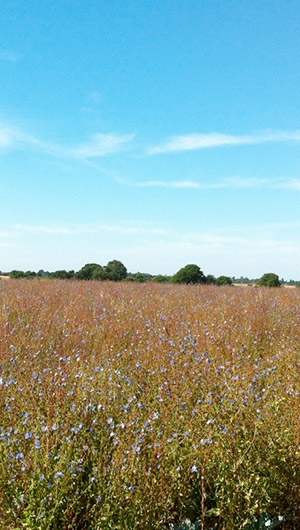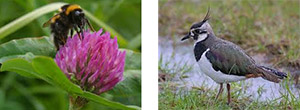Environmental Stewardship
 Nearly all the land we currently farm has some level of stewardship, mostly Higher Level Stewardship or Mid Tier CS agreements. This has given us valuable experience in establishing and maintaining many of the options and activities involved in both.
Nearly all the land we currently farm has some level of stewardship, mostly Higher Level Stewardship or Mid Tier CS agreements. This has given us valuable experience in establishing and maintaining many of the options and activities involved in both.
With many different habitats, some unique to our area, we have used the schemes to utilise marginal areas, LERAPS buffer strips and awkward field corners, as well as our family shoot; this has benefited our farms wildlife diversity whilst having both financial and practical benefits.
Hedges are cut on a 2 or 3 year rotation, and as many as possible are trimmed back in the winter months during dry or frosty mornings, saving time in the summer and utilizing labour in the winter, and providing birds and small mammals with a natural winter food source. We have been rotationally coppicing some of our older hedges giving them a thicker base and a fresh lease of life.
Low lying arable land adjacent to saltmarsh and grazing marsh was proving increasingly marginal due to poor drainage typical of land below sea level; by utilising the over-wintered stubble option followed by spring cultivated fallow, we have been able to increase margins by operating a fallow/wheat/fallow rotation, whilst at the same time creating habitat for lapwings and other ground nesting birds associated with wetland grazing and saltmarsh.
Floristic margins and pollen and nectar mixes require rotational mowing and raking, but have added a new habitat to the farms, one especially good for nesting game birds. Wild bird seed mixes are made up of winter feeding crops such as spring sown kale, linseed, quinoa, millet and sorghum, as well as brood rearing habitat such as autumn sown linseed, triticale, vetch, birdsfoot trefoil and sainfoin.
Standard buffer strips and field corners are rotationally mown to keep back brambles and other invasive weeds, and because of our use of liquid fertiliser and its associated accuracy of application compared to spinning disc spreaders, these buffer strips have naturally reverted to a very low nutrient perennial grass and vetch mixture ideal for butterflies, moths, small mammals and ground nesting birds.
Small areas of woodland are rotationally coppiced, providing a varied habitat within the woodland, as well as valuable firewood for some of the families log burners.
 Birds, insects and small mammal populations are all noticeably higher on the farm since the above habitats have been created and managed, with the biggest restriction being the increasing numbers of predators present. Corvid, fox and grey squirrel populations are all legally and humanely controlled, but this increasingly seems to be a losing battle due to our proximity to a large urban food and habitat source.
Birds, insects and small mammal populations are all noticeably higher on the farm since the above habitats have been created and managed, with the biggest restriction being the increasing numbers of predators present. Corvid, fox and grey squirrel populations are all legally and humanely controlled, but this increasingly seems to be a losing battle due to our proximity to a large urban food and habitat source.
